Cancer cells are cells that undergo uncontrolled growth and division, resulting in the development of an abnormal tissue mass referred to as a tumor.
Unlike normal cells, which follow a regulated life cycle involving growth, division, and programmed cell death, cancer cells evade these processes.
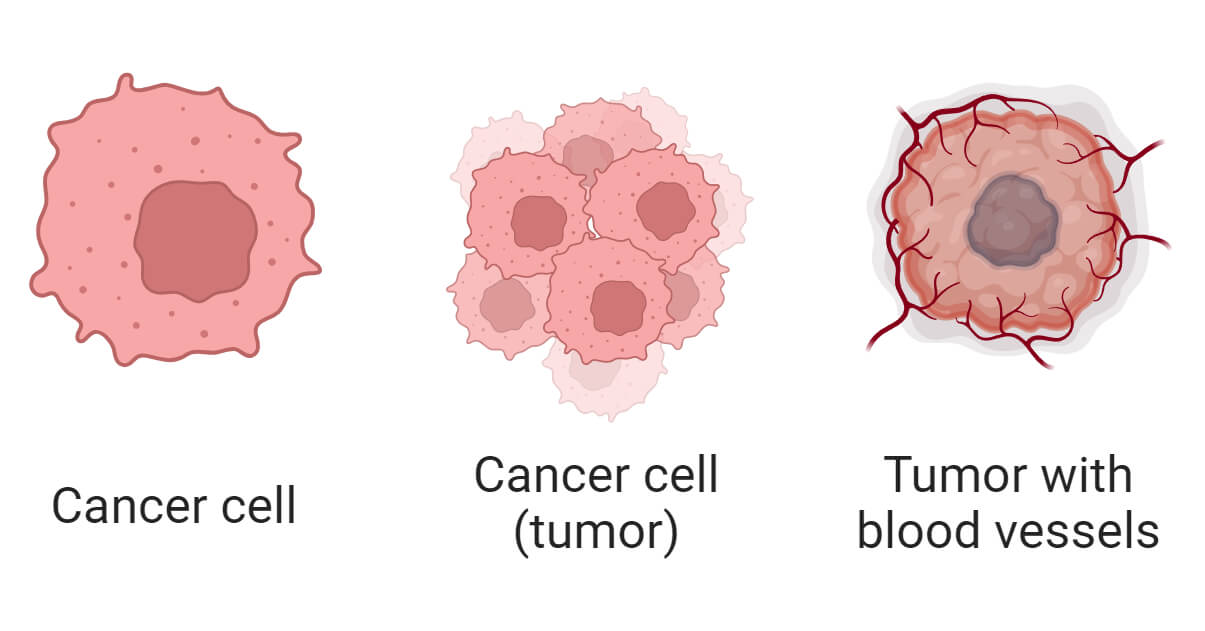
Additionally, cancer cells can invade surrounding tissues and, in some cases, spread to other parts of the body. Understanding the characteristics and behavior of cancer cells is crucial for developing effective strategies for cancer diagnosis, treatment, and prevention.
Interesting Science Videos
Morphology of Cancer Cells
- Nuclear morphology: Cancerous cells have unique features, including a large nucleus with an irregular shape and prominent nucleoli. Changes in chromatin, including heterochromatin reduction and increased nuclear membrane pores are observed along with other ultrastructural changes such as nucleus segmentation, invaginations, and formation of inclusions.
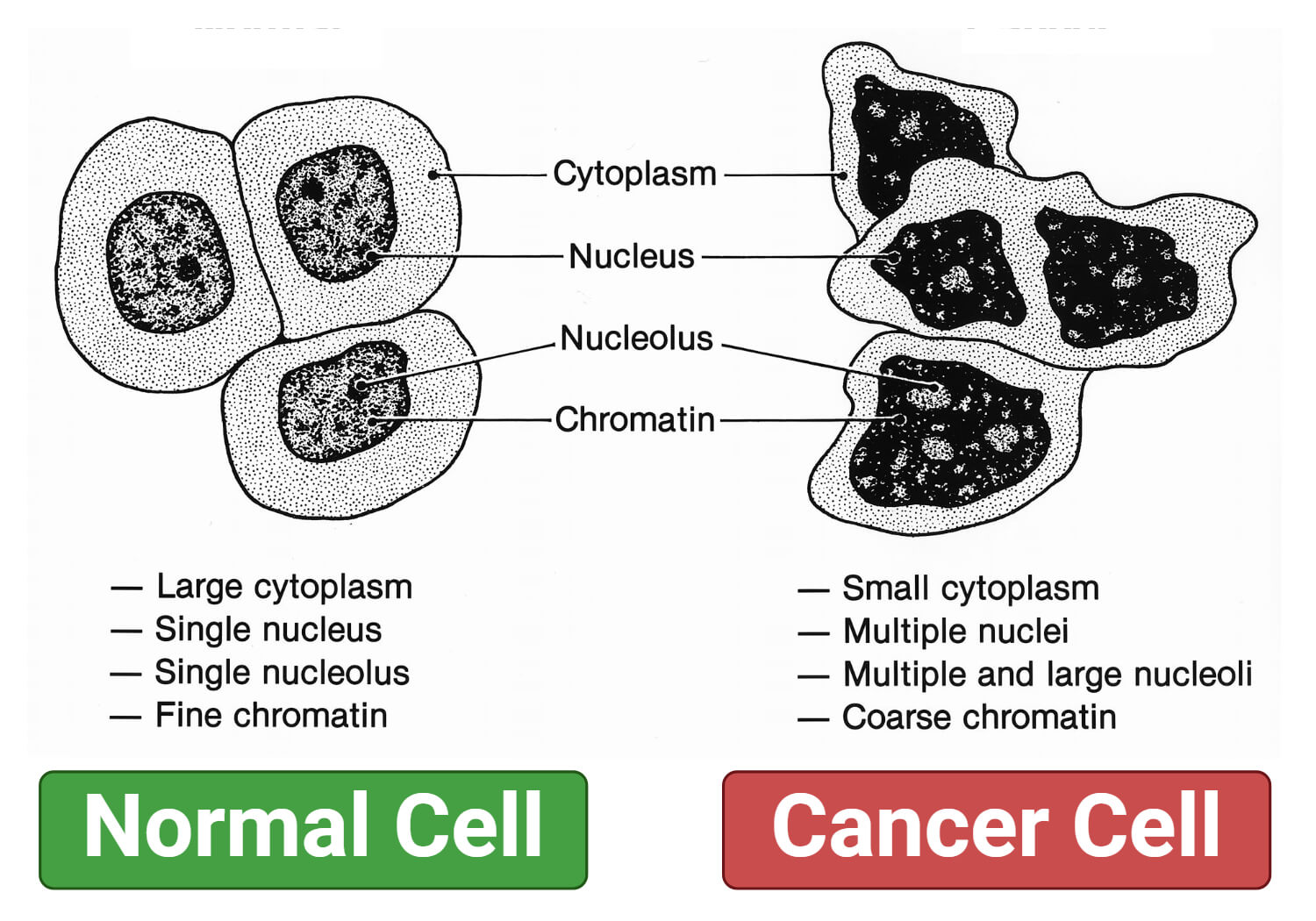
- Mitotic characteristics: Cancer cells have an increased number of mitoses with atypical mitosis forms, such as defects in the mitotic spindle and dissymmetrical structures.
- Cytoplasmic changes: The cytoplasm of cancer cells is scarce and undergoes notable changes including the appearance of new structures. It is basophilic due to the accumulation of ribosomal and messenger RNA.
- Organelle changes: In cancer cells, the Golgi apparatus is poorly developed, and there is a reduction in the volume of mitochondria as the tumor develops. Cancer cells show a simplified granular endoplasmic reticulum structure with frequent fragmentation and degranulation. Changes in the amount and structure of both granular and agranular endoplasmic reticulum are observed in cancer cells.
- Cytoskeletal changes: Cytoskeletal components such as microfilaments, intermediate filaments, and microtubules appear in different proportions in tumor cells. The composition and arrangement of these cytoskeletal elements can affect the ability of tumor cells to move and invade surrounding tissues.
- Cell membrane changes: Changes in the cell membrane affect tumor evolution and host responses. These changes include modified surface receptors, new molecules, and abnormal antigens that trigger immune responses. The cell surface shows atypical structures with highly active enzymes, contributing to malignant cell characteristics.
- Metabolic changes: Cancer cells have abnormal energy metabolism processes. These cells show poor use of oxygen and massive use of glucose, behaving like metabolic parasites. Abnormal glycolysis processes in mitochondrial membranes, known as the “Warburg phenomenon” are present.
Development of Cancer Cells
- The development of cancer cells involves a series of genetic and cellular changes including genetic mutations and disruptions in normal cell growth regulation.
- Cancer cells form due to genetic mutations that may be inherited or caused by external factors such as exposure to carcinogens like smoking, radiation, viruses, and certain chemicals.
- Normal cell growth is regulated, with precise mechanisms controlling growth, division, and death. However, mutations can disrupt the normal regulation of cell growth and division leading to the formation of tumors.
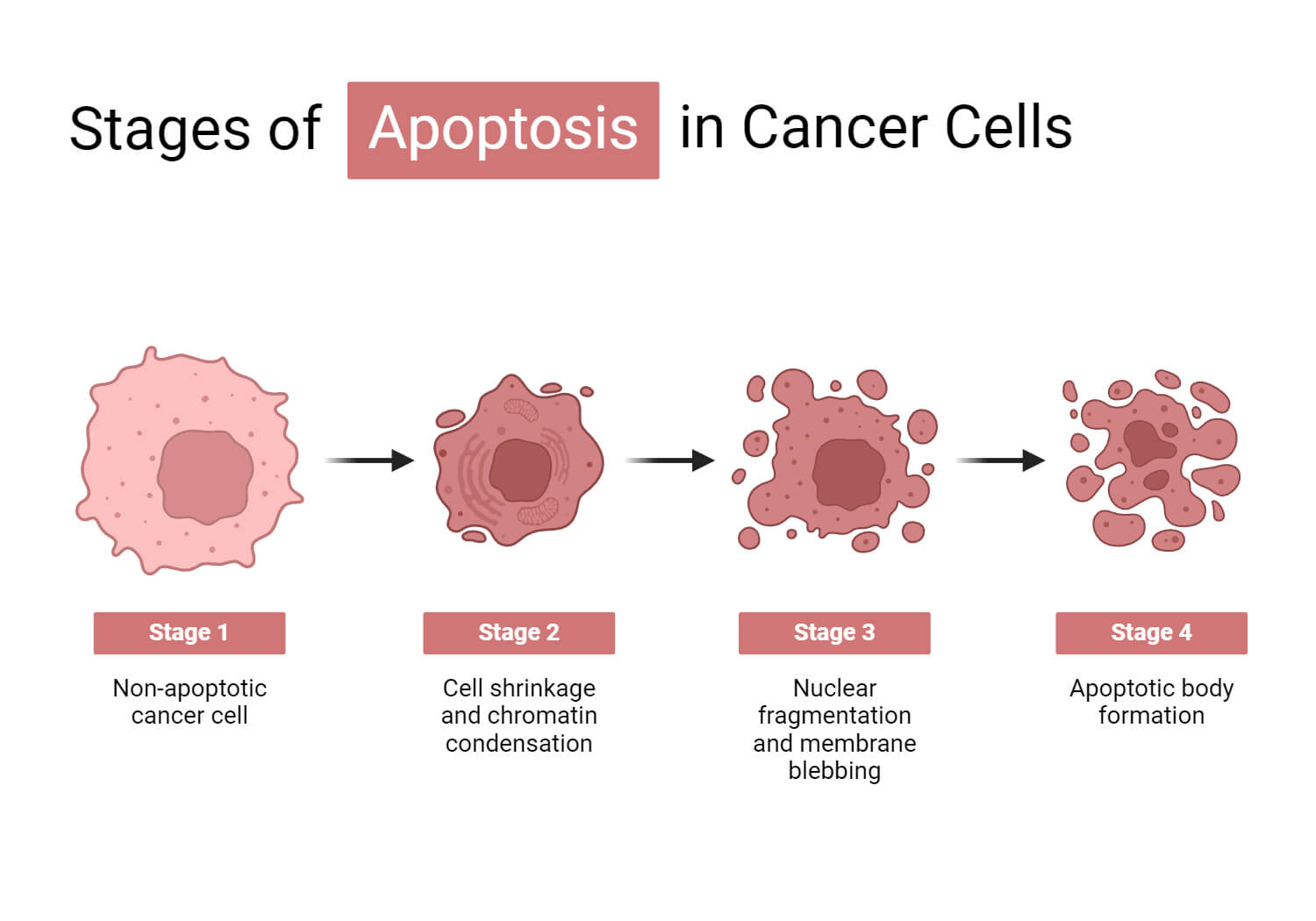
- Cancerous tumors can evade the normal programmed cell death mechanism called apoptosis and continue to divide further. It can also escape immune detection and destruction.
- Cancerous cells can also stimulate angiogenesis, forming new blood vessels to supply nutrients and eventually these malignant cells can invade and spread to other parts of the body.
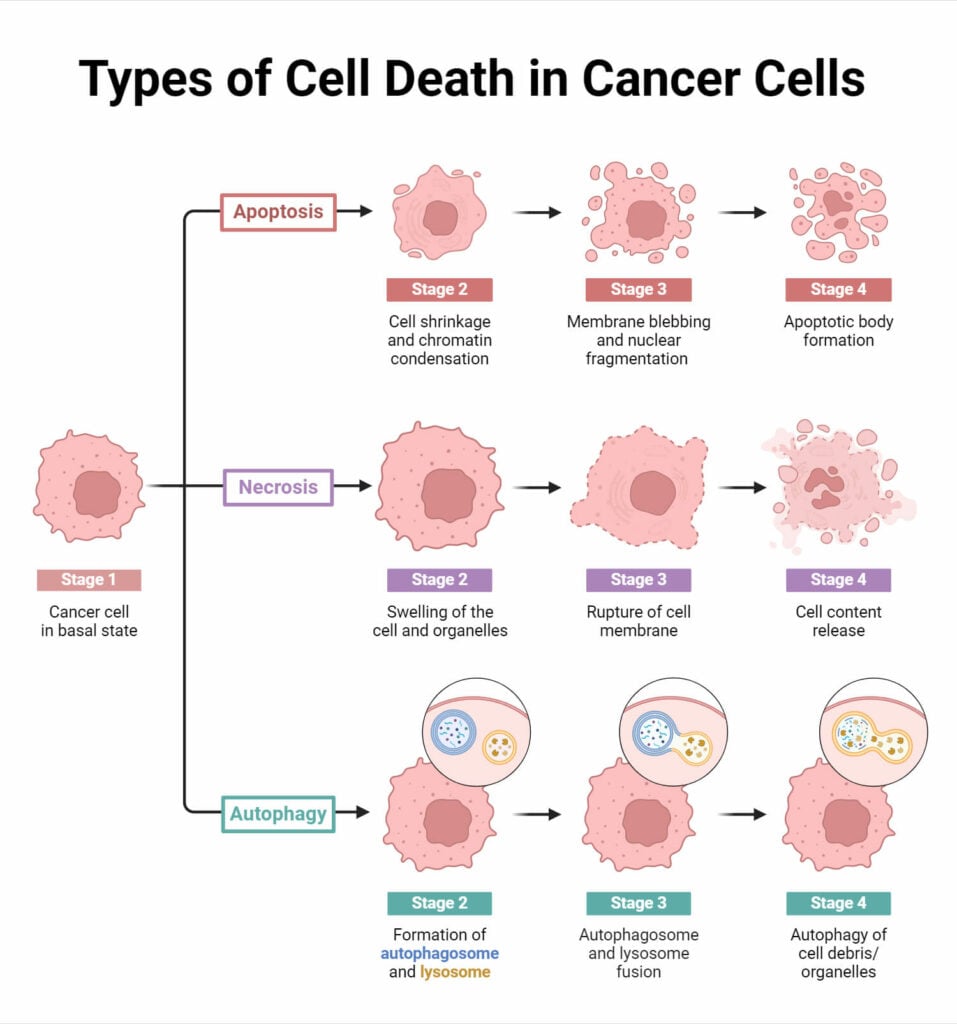
Types of Cancer Cells
Cancer cells come in various types, each originating from different parts of the body. Some common types of cancer cells, based on the cells of origin are:
- Carcinoma originates in the epithelial cells covering external surfaces and internal organs. It can occur in various organs like the skin, lungs, breast, prostate, and colon.
Types of carcinomas include:
- Adenocarcinoma develops in epithelial cells producing fluids or mucus, commonly found in glandular tissues like the breast, colon, and prostate.
- Basal cell carcinoma occurs in the lower or basal layer of the skin’s epidermis.
- Squamous cell carcinoma affects the squamous epithelial cells beneath the skin and lining various organs.
- Sarcomas arise in the connective tissues, including muscles, fat, blood vessels, bone, or cartilage, which are the supporting tissues of the body.
Examples include:
- Osteosarcoma is the most common bone cancer.
- Leiomyosarcoma is a tumor that occurs in smooth muscle tissue.
- Kaposi Sarcoma occurs in the skin, lymph nodes, and internal organs.
- Leukemia originates in the blood-forming cells. While most cases involve cancerous transformations of white blood cells, some leukemias may originate from other types of blood cells. They can be classified primarily as acute or chronic leukemia affecting either myeloid or lymphoid blood cells.
- Lymphoma is a blood cancer that affects the lymphatic system. It affects the lymph glands or other organs connected to the lymphatic system. Hodgkin lymphoma and non-Hodgkin lymphoma (NHL) are the main types of lymphoma.
- Multiple myeloma, also called plasma cell myeloma, affects plasma cells, which are immune cells producing antibodies. It occurs in the bone marrow and forms tumors in bones. It is also known as Kahler disease.

Cancer Cells vs. Normal Cells (7 Differences)
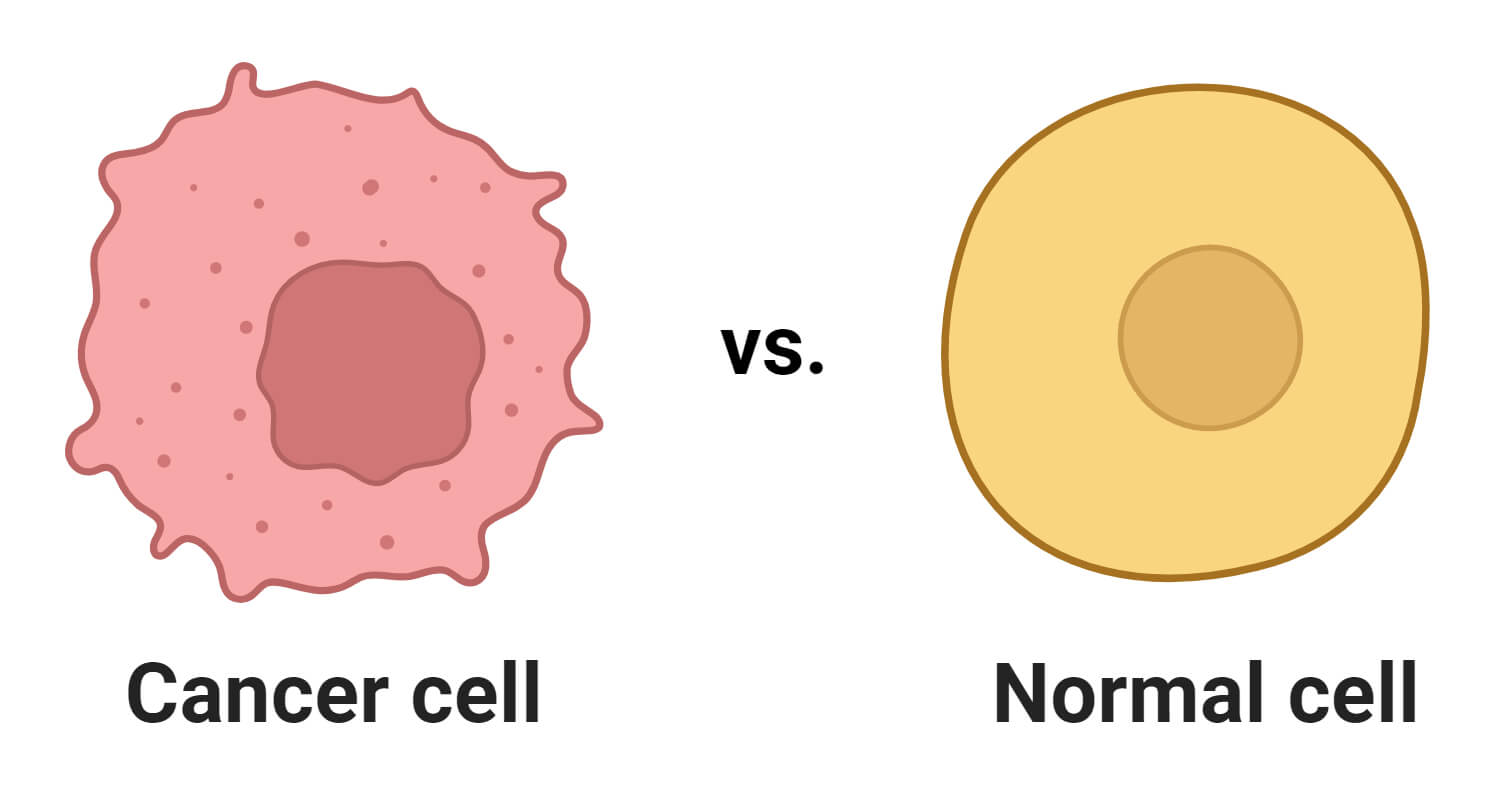
| Characteristics | Normal cells | Cancer cells |
| Growth | Normal cells stop dividing when specific signals indicate that growth should stop. | Cancer cells undergo uncontrolled growth. They do not respond to signals that inhibit cell division. |
| Regulatory mechanisms | Normal cells have well-regulated mechanisms controlling proliferation, differentiation, and survival. | Cancer cells show abnormalities in these regulatory mechanisms, leading to uncontrolled growth. |
| Density-dependent inhibition | Normal cells display density-dependent inhibition, stopping proliferation when reaching a finite cell density. | Cancer cells are insensitive to density-dependent inhibition, continuing to grow to high cell densities. |
| Immune response | In normal cells, the immune system detects and removes damaged cells. | Cancer cells evade the immune system, escaping detection. |
| Contact inhibition | Normal cells inhibit further proliferation upon cell-cell contact. | Cancer cells lack sensitivity to contact inhibition. They grow in disordered patterns even after contact with neighboring cells. |
| Angiogenesis | Normal cells do not instruct blood vessels to grow toward them. | Cancer cells promote angiogenesis, leading to the formation of new blood vessels necessary for tumor growth and metastasis. |
| Cell death (Apoptosis) | Normal cells undergo apoptosis in response to signals from growth factors or extracellular matrix. | Cancer cells evade the process of apoptosis, leading to prolonged survival compared to normal cells. |
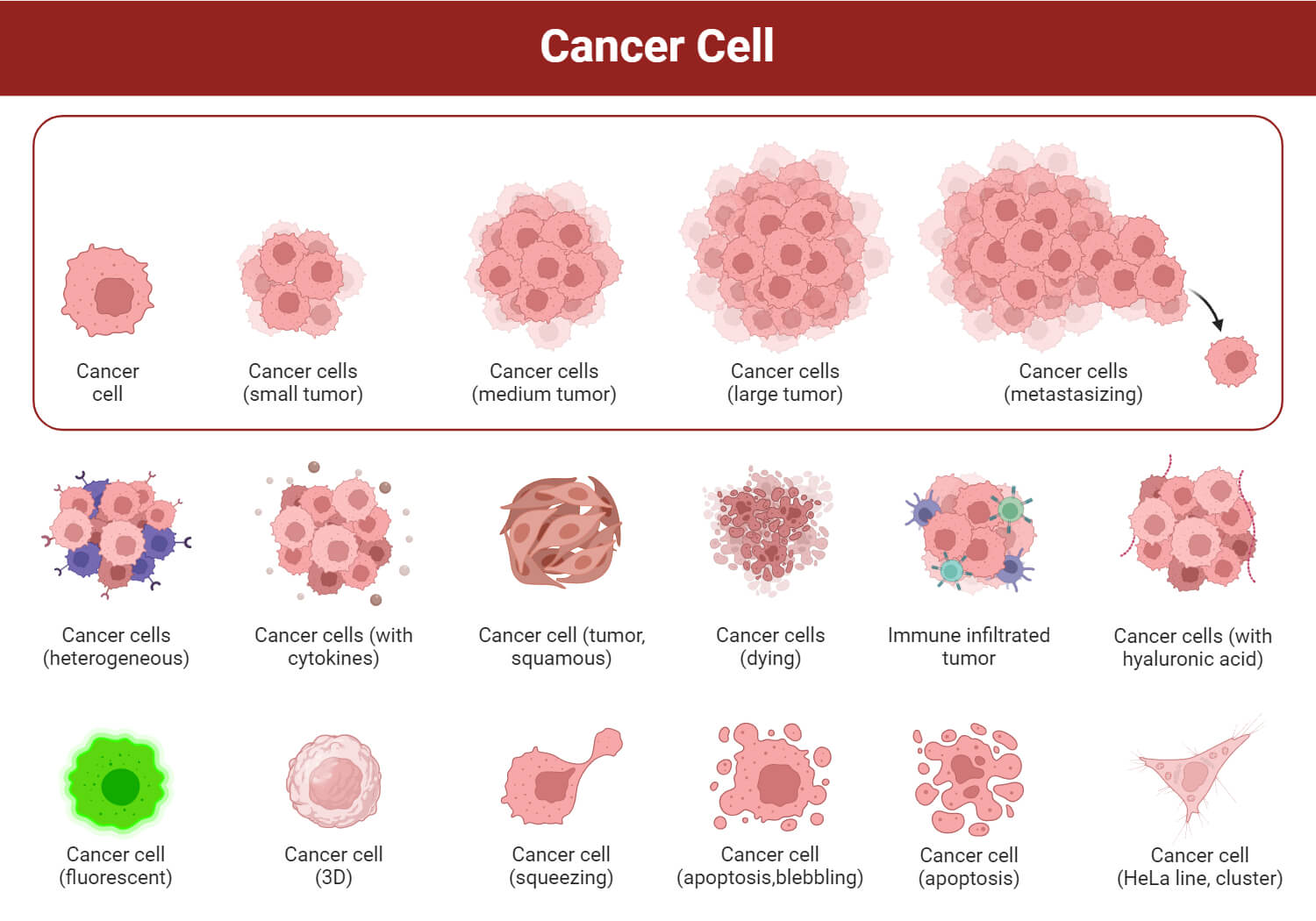
What is a Cancer?
- Cancer is a group of diseases that involves the uncontrolled growth of abnormal cells and in some cases spread to different parts of the body.
- Normally, cells follow a regulated process of growth, division, and death. However, abnormal cancer cells proliferate uncontrollably, forming tumors that can be either malignant or benign.
- Malignant tumors are cancerous cells that can invade surrounding tissues and have the potential to metastasize or spread to other body parts of the body.
- Benign tumors are non-cancerous cells that cannot invade other tissues and usually do not recur after removal. Although they can be large and, in some cases, pose serious health risks, they lack the capacity for invasion and metastasis as seen in cancerous tumors.
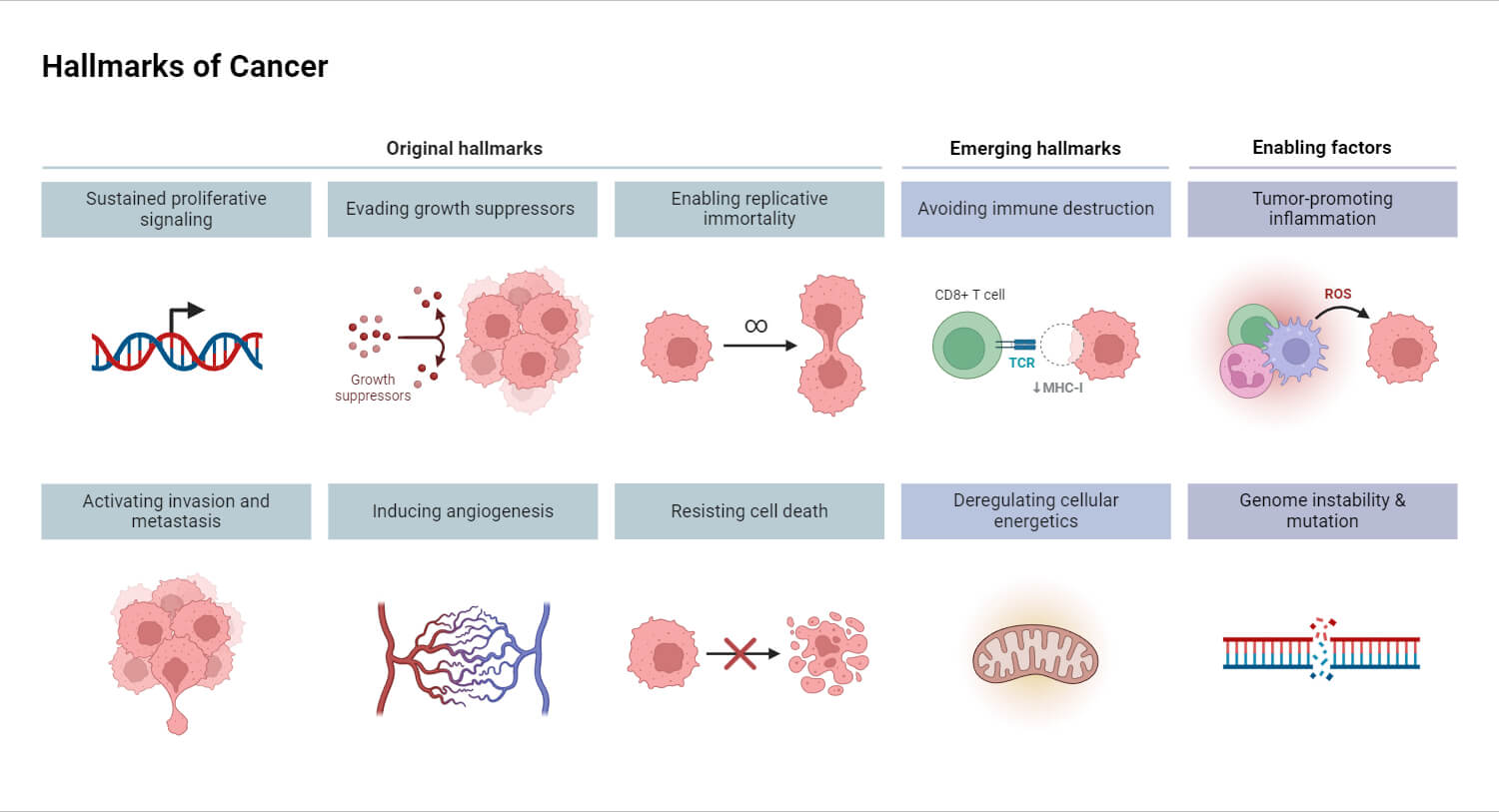
- Cancer is a genetic disease that can start anywhere in the body and is of different types based on the cells or organs of their origin.
- The diagnostic process involves different screening methods, and treatment includes options such as surgery, chemotherapy, radiation, and immunotherapy.
- Cancer is one of the major causes of death worldwide. Advancements in early detection and treatment can positively impact patient outcomes.
References
- Baba AI, Câtoi C. Comparative Oncology. Bucharest (RO): The Publishing House of the Romanian Academy; 2007. Chapter 3, TUMOR CELL MORPHOLOGY. Available from: https://www.ncbi.nlm.nih.gov/books/NBK9553/
- Cooper GM. The Cell: A Molecular Approach. 2nd edition. Sunderland (MA): Sinauer Associates; 2000. The Development and Causes of Cancer. Available from: https://www.ncbi.nlm.nih.gov/books/NBK9963/
- Costa, J. (2024, January 31). cancer. Encyclopedia Britannica. https://www.britannica.com/science/cancer-disease
- Eldridge, L. Cancer Cells vs. Normal Cells: How Are They Different? (April 21, 2023). verywell health. https://www.verywellhealth.com/cancer-cells-vs-normal-cells-2248794
- Eldridge, L. Cancer Cells. (October 21, 2023). verywell health. https://www.verywellhealth.com/what-are-cancer-cells-2248795
- Ruddon RW. What Makes a Cancer Cell a Cancer Cell? In: Kufe DW, Pollock RE, Weichselbaum RR, et al., editors. Holland-Frei Cancer Medicine. 6th edition. Hamilton (ON): BC Decker; 2003. Available from: https://www.ncbi.nlm.nih.gov/books/NBK12516/
- What Is Cancer? – NCI. National Cancer Institute.
- What is Cancer? | Cancer Basics
